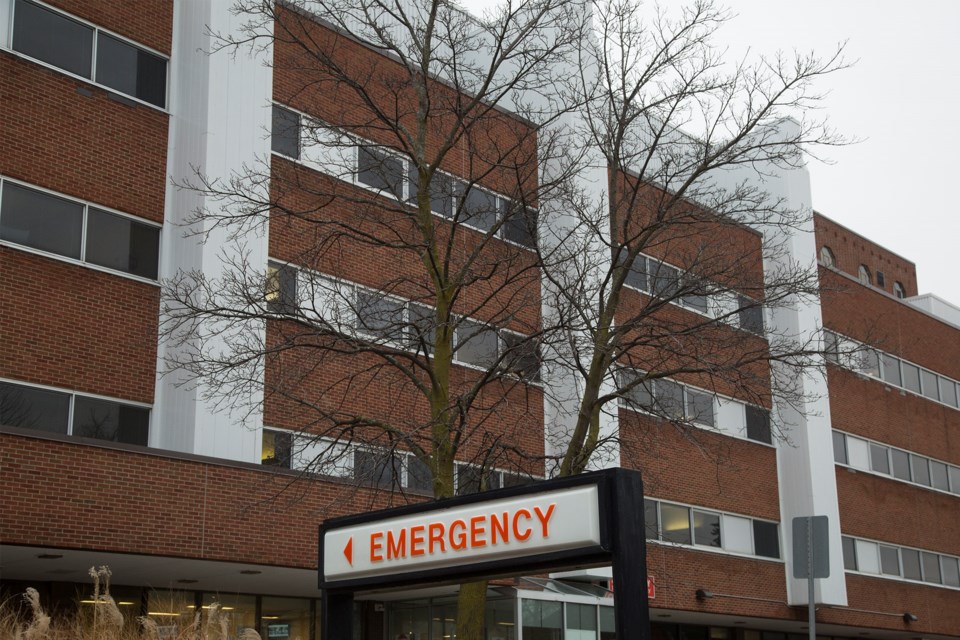The head of the Guelph General Hospital is defending the health care facility’s efforts to enhance safety in the aftermath of allegations by the Ontario Nurse’s Association (ONA) that the hospital is falling short.
Marianne Walker said intensive and ongoing efforts are being made to vastly improve safety for staff, patients, and visitors to the hospital. Improvements have been made.
“We do take safety very seriously, and one of our strategic goals is to reduce staff harm,” Walker said. “We want to become one of the safest hospitals.”
But according to ONA, the hospital is far from attaining that goal. The union has sharply criticized the health and safety environment at the hospital, with the association’s president saying in a statement that there have been “several serious incidents” recently that have placed hospital staff in harm’s way. The association is calling for an investigation under the province’s Occupational Health and Safety Act.
ONA president Linda Haslam-Stroud said Guelph General is lacking in mandatory violence prevention training for staff, as well as being deficient in identifying patients who are a violence risk. The hospital also has a shortage of panic buttons for on-duty nurses.
But Walker said all of these areas are being addressed, and she is surprised by the ONA claims, especially since four ONA members are on the hospital’s joint health and safety committee, a committee that is co-chaired by management and the union.
“Out of that committee we look at every incident, looking at what are some of the safety issues and workplace violence issues, and then take a look at what we need to improve,” Walker said. “We have their input. They give us guidance. So I was quite surprised to hear that.”
Anne Clark, an ONA vice-president, said Guelph General is currently not compliant with the workplace safety legislation that is in place to protect registered nurses, patients and families that visit the hospital.
However, Clark acknowledged that the hospital is providing “some security and phones for the nurses, and starting to take some measures.”
According to ONA, a Guelph General nurse was injured recently when a patient suddenly became violent. The nurse was grabbed, punched, bitten and kicked, and was struck in the face with a full bottle of urine. Help was not close at hand for the nurse, ONA stated in a press release.
The attack resulted in a laceration and bite wound, and required follow-up tests for HIV and hepatitis, as well as antibiotic treatment.
“You have to be prepared for every eventuality,” Clark said. “It is just the nature of health care today. These things happen and you have to be prepared. And we want to work with the employer to make sure this doesn’t happen again.”
In another incident, a patient was admitted to hospital with a chemical contaminant on their person, Clark said. But the hospital had failed to stock proper protective equipment for staff in such an eventuality. Staff took the patient to an ambulatory area outside to clean off the chemical.
“They are supposed to be more prepared, and they were very ill-prepared for the contamination case,” Clark said. “All hospitals have to be prepared for contamination cases.”
Walker said in the recent incident involving contamination, hospital staff “erred on the side of caution,” learned from it, and discovered what needed to be changed. She said there was no health and safety risk to staff. A temporary solution is in place, and training is being provided. A comprehensive, long-term plan is being worked on, she said.
Walker said an emergency department security audit, and a hospital-wide security audit have been completed. A “long list” of recommendations from the ED audit were implemented, she said. Once the final report on the broader audit is complete its recommendations will also be acted on. Various code changes have also been implemented.
“We just added a new health and safety officer position because we thought this was a priority for our organization,” she added. The officer is responsible for general health and safety. “We need to demonstrate we are committed to this, and this is another way to help us get there.”
“We are looking continually at how we can make it safer for our staff,” she added. Health and safety is part of weekly management discussions. “It’s become part of our culture that we’re talking about staff safety.”
Walker agrees with ONA that in high risk areas of the hospital, staff need crisis intervention measures in place. Those have been added to ED, and are being planned for other areas of the hospital, including intensive care. Two-day crisis intervention training is being provided to staff four times a year. As well, training in the gentle persuasion approach, a means of defusing volatile situations, is also being offered monthly to all staff.
ONA represents about 60,000 registered nurses and allied health professionals in Ontario’s health care system.
